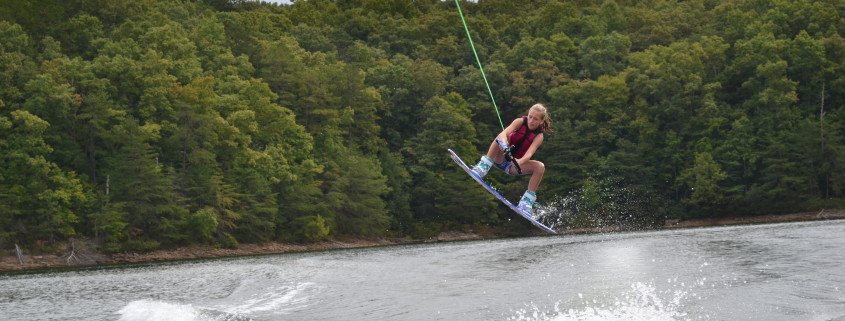Is a Bigger Wake Better?
A few months ago I rode the biggest wake of my life. It was a fully weighted down Nautique 230, with about 10 people in the boat along for the ride. I had a great time behind the boat, and stayed along to watch others take their turn. A few of the next riders were beginner to intermediate’s, and I noticed they had a pretty difficult time landing the tricks they would normally land on a smaller wake. This made me think about the misconception in wakeboarding that a bigger wake is always going to be better.
I’ve always thought that new riders who start out wakeboarding on a small wake have a huge advantage, because they are forced to learn how to edge and pop properly if they want to get any air at all. There are two bad habits that a big wake will typically create with novice riders; they will back off their edge as they hit the bottom of the wake, and absorb the pop with their knees.
A huge wake will also hinder the progression of new riders. I know this sounds a little cliché, but the bigger the wake the bigger the fall. After a few hard falls, fear starts to get in the way, and pushes riders out of the mindset of working on a trick until they land it. A un-weighted boat, or small wake, is not only better for learning the basics of edging and pop, but also for spins like front side and back side 180’s, and 360’s because it teaches you how to initiate the spin by pulling the handle toward your hips, and not hucking your upper body.
You may ride behind a fishing boat, or inboard/outboard, but don’t let that get you discouraged from progressing. Keep working on the basics of wakeboarding: progressive edging, switch riding, board grabs, toeside airs, and 180’s. Remember when wakeboarding was in its infancy? Pro riders were still landing mobes and Raley’s off 19 foot ski boats, with no extra ballast, and on the low pylon. Keep your rope length in mind too. You’ll want to ride a shorter length rope when you’re on a small wake, typically 55-60 feet so it’s easier to clear both wakes. When you ride a bigger wake, let the line out longer.
When you get to the skill level where you need to add weight to your boat, the general rule is to weight the front with half as much weight as the rear. For example, if you have 600 lbs in the rear of the boat, you’ll want to put 300 lbs in the front. To adjust the shape of the wake, more weight in the rear of the boat will make the wake steeper, while more weight in the front will make it rampy. Many riders commonly make the mistake of only weighting the rear of the boat. While this makes the wake big, it will also make it wash out and curl over at slower speeds.
At camp we start adding factory ballast, about 1000 lbs, when riders start working on basic inverts. We’ll add more weight with Fat Sacs when they get to the level of trying drifting tricks, inverts to blind, and rodeo flips. Until then, take that extra gas money you would have spent pushing a jacked up wake, and ride one more set on a smaller wake.


Leave a Reply
Want to join the discussion?Feel free to contribute!